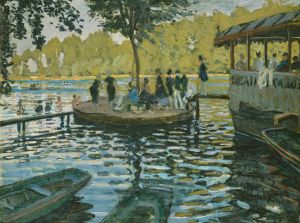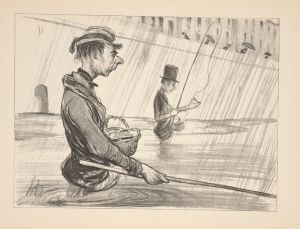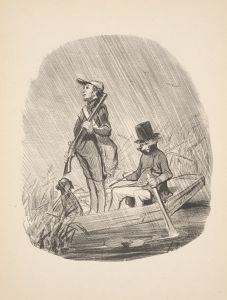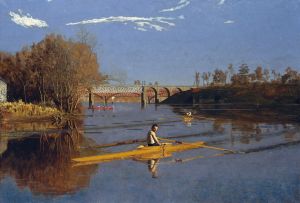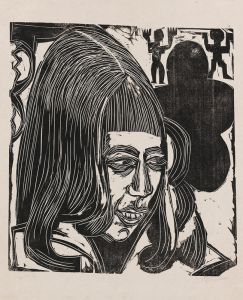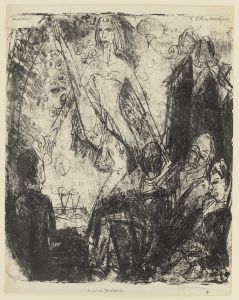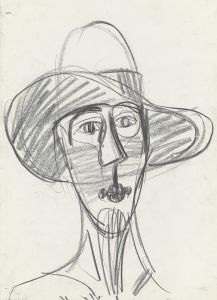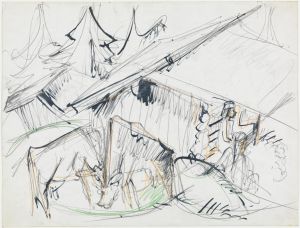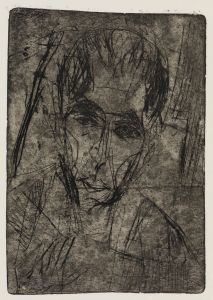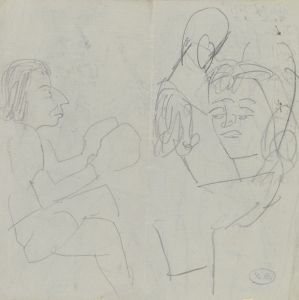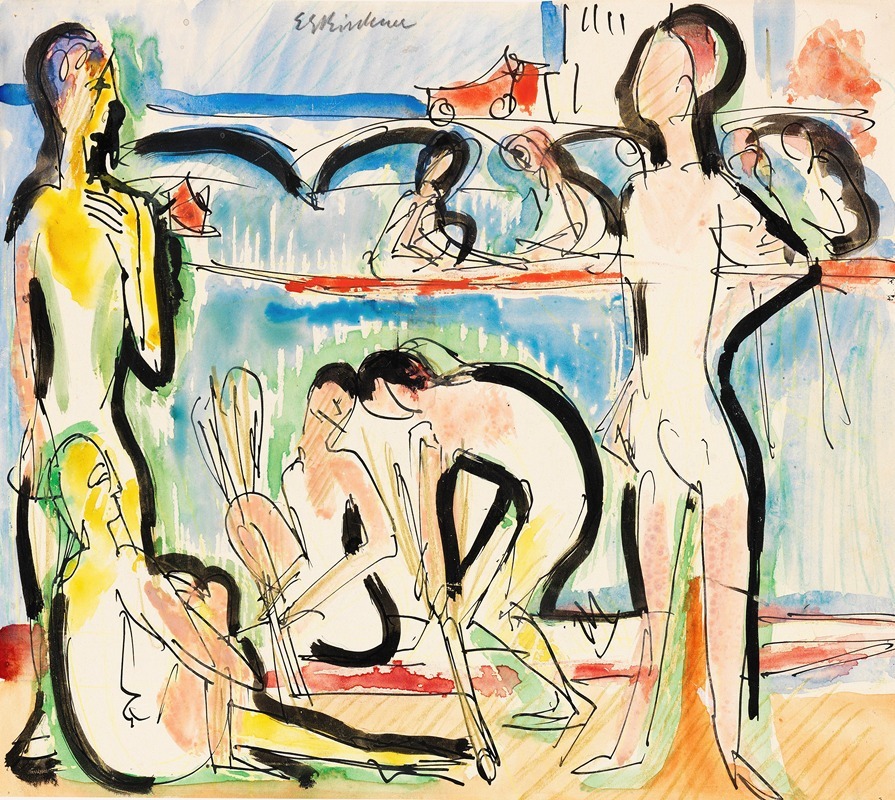
Ruderer
A hand-painted replica of Ernst Ludwig Kirchner’s masterpiece Ruderer, meticulously crafted by professional artists to capture the true essence of the original. Each piece is created with museum-quality canvas and rare mineral pigments, carefully painted by experienced artists with delicate brushstrokes and rich, layered colors to perfectly recreate the texture of the original artwork. Unlike machine-printed reproductions, this hand-painted version brings the painting to life, infused with the artist’s emotions and skill in every stroke. Whether for personal collection or home decoration, it instantly elevates the artistic atmosphere of any space.
Ernst Ludwig Kirchner was a prominent German expressionist painter and one of the founding members of the influential art group Die Brücke (The Bridge), which played a crucial role in the development of modern art in the early 20th century. Kirchner's work is characterized by its bold use of color, dynamic compositions, and a focus on the human figure, often exploring themes of modernity and urban life.
"Ruderer" (translated as "Rowers") is one of Kirchner's notable works, created during a period when he was deeply engaged with the expressionist movement. The painting exemplifies Kirchner's distinctive style, marked by vigorous brushstrokes and a vivid color palette. While specific details about the painting "Ruderer" are limited, it is consistent with Kirchner's broader body of work, which often depicted scenes of leisure and movement, capturing the energy and dynamism of the early 20th century.
Kirchner's interest in depicting rowers and similar subjects can be traced back to his fascination with the human form in motion and the natural world. This interest was likely influenced by his experiences and observations of life in Germany, where rowing was a popular pastime. The theme of rowers also aligns with Kirchner's exploration of the relationship between humans and their environment, a recurring motif in his art.
Throughout his career, Kirchner was deeply influenced by the rapid changes occurring in society, particularly the urbanization and industrialization of Europe. His works often reflect a tension between the natural world and the encroaching modernity of city life. This tension is evident in many of his paintings, where he juxtaposes vibrant, natural landscapes with the stark, angular forms of human figures.
Kirchner's contribution to the expressionist movement was significant, as he sought to convey emotional experiences rather than physical reality. His work often features distorted forms and exaggerated perspectives, techniques that were intended to evoke an emotional response from the viewer. This approach was part of a broader expressionist goal to depict the subjective experience of the world, challenging traditional artistic conventions.
The legacy of Ernst Ludwig Kirchner and his work, including pieces like "Ruderer," continues to be celebrated in the art world. His innovative use of color and form has influenced countless artists and remains a subject of study and admiration. Kirchner's paintings are housed in major museums and collections worldwide, where they continue to captivate audiences with their dynamic energy and emotional depth.
In summary, while specific information about the painting "Ruderer" is limited, it is representative of Ernst Ludwig Kirchner's broader artistic themes and style. His work captures the spirit of the expressionist movement, emphasizing emotional experience and the complexities of modern life.





